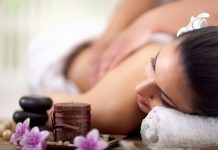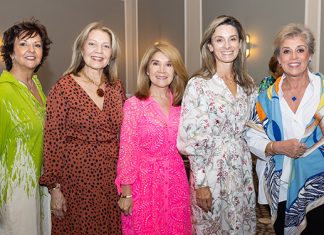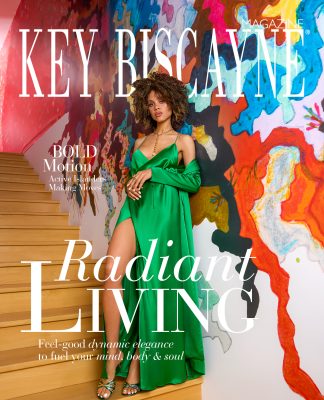 Beauty is often hard to define, perhaps most of all in South Florida with our diverse blend of various cultures, each with its own take on what characterizes attractiveness. While some trends traverse boundaries —such as the willingness to consider some form of plastic surgery at some point in their life, still others are more arcane. “We as anthropologists are exposed to a wide variety of aesthetic preferences, from the cascades of cellulite appreciated by Inuit people to the gaunt runway models of Milan,” says Professor J. Bryan Page of the University of Miami’s Department of Anthropology. “High, sculptural cheekbones are admired in one cultural context and seen as skeletal in another.”
Beauty is often hard to define, perhaps most of all in South Florida with our diverse blend of various cultures, each with its own take on what characterizes attractiveness. While some trends traverse boundaries —such as the willingness to consider some form of plastic surgery at some point in their life, still others are more arcane. “We as anthropologists are exposed to a wide variety of aesthetic preferences, from the cascades of cellulite appreciated by Inuit people to the gaunt runway models of Milan,” says Professor J. Bryan Page of the University of Miami’s Department of Anthropology. “High, sculptural cheekbones are admired in one cultural context and seen as skeletal in another.”
When it comes to modern procedures, treatments and goals, Page says the techniques are endless. “Plucking, waxing, electrolysis to remove hair, dying, bleaching, blowdrying, permanent application, wigs, makeup to lighten or darken skin color and hide wrinkles and blemishes, diet pills, liposuction, obsessive exercise to make the body slender, surgery to add or subtract flesh…all these things only scratch the surface,” he says.
“In the world of aesthetics, beauty has come to be perceived as some sort of attainable object embodied by attractiveness, sexuality, self-confidence and youth,” says Dr. Jhonny Salomon of the Dr. Jhonny Salomon Plastic Surgery & Med Spa. He points out that the field of aesthetics is ever evolving. When considering the most popular treatments and procedures one must remember: Beauty, in order to preserve its beauty, must remain in the realm on reality; it must retain its natural elegance. The most popular modern procedures are those that allow patients to achieve a natural and elegant look, such as Fillers, Botox, and Thermage. “Beauty is subjective, exclusively in reference to the person making the judgment,” says Salomon. “Beauty is also abstract, existing as an idea, as a feeling. Beauty, in essence, is art.”
 “Tall and tan and young and lovely…” goes the line from The Girl From Ipanema, and that remains true of Brazil today. The number of plastic surgery procedures continues to increase dramatically with breast and, yes, buttock, augmentations peaking before Carnival. Miss Brazil 2001 was proudly known to have 23 cosmetic procedures before the age of 22, including liposuction, breast implants and silicone added to her cheeks.
“Tall and tan and young and lovely…” goes the line from The Girl From Ipanema, and that remains true of Brazil today. The number of plastic surgery procedures continues to increase dramatically with breast and, yes, buttock, augmentations peaking before Carnival. Miss Brazil 2001 was proudly known to have 23 cosmetic procedures before the age of 22, including liposuction, breast implants and silicone added to her cheeks.
Often referred to as the world’s most famous plastic surgeon, Brazil’s Dr. Ivo Pitanguy has his own views on beauty. “To be happy with yourself is by no means a superficial desire,” he says. “My operations are not just for my patients’ bodies. They are for their souls.”
In Miami, we not only see Latin and South American beauties abound but their natural magnetism is making itself felt among mainstream America as well. “Latin American models tend to look healthier than those pale, bony Eastern European models,” says fashion columnist Jared Paul Stern, who correctly predicted a few years back that fuller figures and tan skin would make a comeback. And why not, as English author Graham Greene once said: “Living in Havana was like living in a factory that produced human beauty on an assembly line.”
Yet despite starting to re-appreciate curves, in present-day Western society thin is seriously in. “In undeveloped countries, thinner people, in general, are usually poorer than the ones who weight more,” report David A. Levy and Eric B. Shiraev, authors of Cross-Culture Psychology. “In rich countries the correlation is negative: People who are richer tend to be thinner. In the U.S. especially, most people hold negative attitudes toward body fat. According to surveys, people attribute increased body weight to being poor or having poor health. Obese women, more often than men, are rated negatively by peers.”
 What’s more, there isn’t a culture in the world without members who strive to attain a look they were not born with. For example, wanting to emulate the Hollywood ideal has led to a significant increase in one particular plastic surgery for those of Korean descent. Though even that ideal is evolving. “A lot has changed over the years,” says Dr. John A. McCurdy, Jr., plastic surgeon and author of Cosmetic Surgery Of The Asian Face. “It used to be that Asian girls were requesting westernization procedures. They wanted to look Caucasian. But now what they’re requesting is a procedure to enhance the double eyelid while maintaining the other characteristics of the Asian eye.”
What’s more, there isn’t a culture in the world without members who strive to attain a look they were not born with. For example, wanting to emulate the Hollywood ideal has led to a significant increase in one particular plastic surgery for those of Korean descent. Though even that ideal is evolving. “A lot has changed over the years,” says Dr. John A. McCurdy, Jr., plastic surgeon and author of Cosmetic Surgery Of The Asian Face. “It used to be that Asian girls were requesting westernization procedures. They wanted to look Caucasian. But now what they’re requesting is a procedure to enhance the double eyelid while maintaining the other characteristics of the Asian eye.”
Though the world seems to get smaller every day and popular aesthetics become blended as cultures admire each other and borrow the ideas they like, when it comes to fashion, different cultures still make their taste known. When it comes to Latin fashion, the influences may be different — heritage, travel, friends and relatives — but some common denominators of culture flow through. “The Latin American woman is a woman who has always felt strongly about her femininity and that has influenced my designs,” says world-renowned designer Oscar De La Renta of his Dominican heritage. Shoe designer Edmundo Castillo, who spent his youth in Puerto Rico, concurs, “Latin American women love to be flirtatious in a slinky dress, going dancing,” he says. “The first and foremost thing about their shoes is they have to be sexy.”
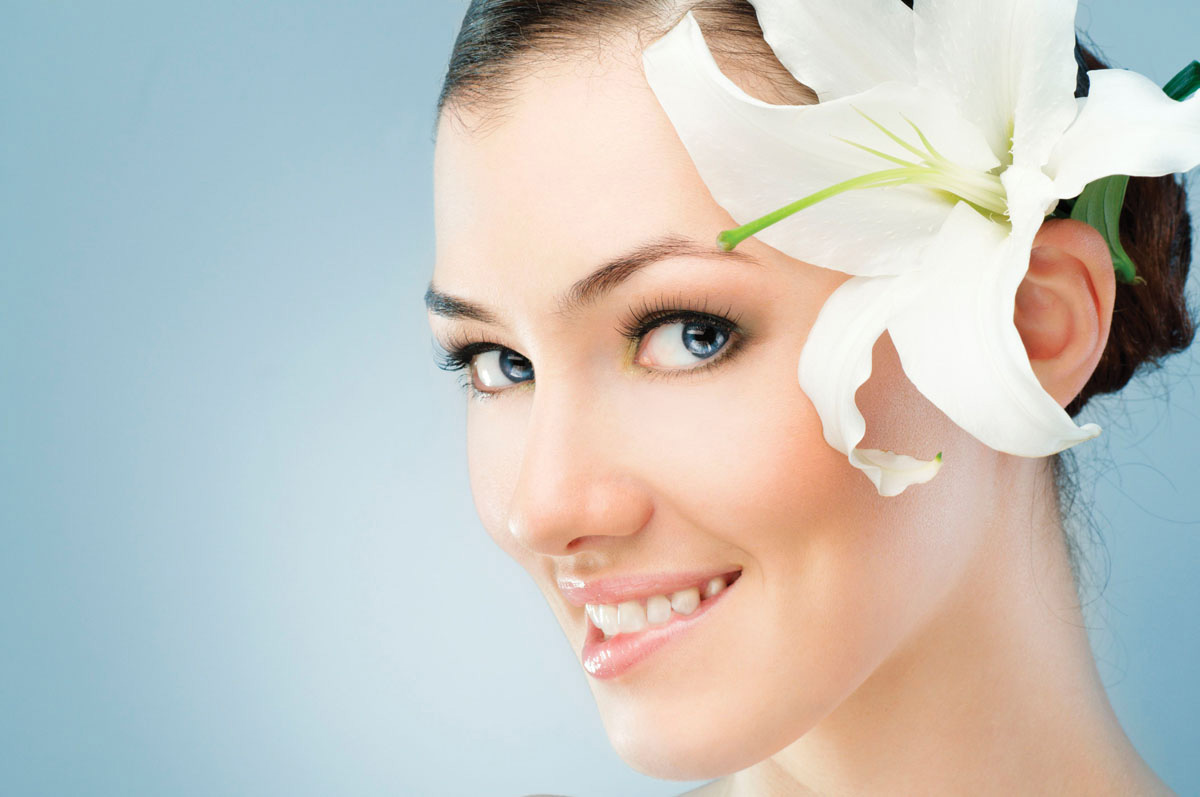 But when it all comes down to it, beauty remains a personal opinion, no matter what culture influences your perceptions. “As a photographer, I’m constantly confronted by perceived ideals of beauty,” says celebrity photographer Rankin. “The models, actors, musicians, and ‘real’ people who I see through my lens are all influenced by an oppressive world of unattainable physical goals. I always work hard to break through the artifice and capture something unique, original and beautiful in each of my subjects. Interest and creativity is not about perfection but quite the opposite; I believe beauty comes from our idiosyncrasies.”
But when it all comes down to it, beauty remains a personal opinion, no matter what culture influences your perceptions. “As a photographer, I’m constantly confronted by perceived ideals of beauty,” says celebrity photographer Rankin. “The models, actors, musicians, and ‘real’ people who I see through my lens are all influenced by an oppressive world of unattainable physical goals. I always work hard to break through the artifice and capture something unique, original and beautiful in each of my subjects. Interest and creativity is not about perfection but quite the opposite; I believe beauty comes from our idiosyncrasies.”
Pretty Strange
Beauty is in the eye of the beholder, or so they say. The following beauty rituals, while they may seem wild to us, are symbols of beauty to the people who practice them.
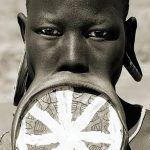 Lip Plates
Lip Plates
In African Tribes such as the Suri, young girls stretch their lips around wood or clay plates as they have for thousands of years and wear them for life, a symbol of admiration and respect.
 Giraffe Women
Giraffe Women
The Padaung women of Southeast Asia have earned the nickname Giraffe Women because of the custom of placing rings around their necks until they wed.
 Obese Attraction
Obese Attraction
In parts of Cameroon and elsewhere in Africa, intentional obesity, especially in the butt area is viewed as a good thing, evoking images of abundance, fertility and erotic presence.
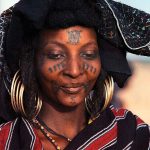 Tattoo You
Tattoo You
The Fulani people of West Africa enhance their beauty with detailed tattoos. The women often have black lips from use of henna or as a result of obtaining a permanent lip tattoo.
 Nose Gauge
Nose Gauge
Women of the Apatani Tribe in India were forced to stretch their noses with massive nose plugs in order to become less attractive to invading tribes, and more attractive to Apatani men.
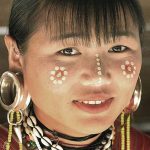 Big Ears
Big Ears
Thai hill tribes stretch pierce holes in their earlobes to the extreme by enlarging them over time until they are able to fit large silver rings and other large styles of jewelry and adornment.
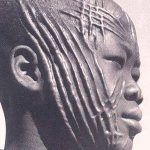 Geo Scars
Geo Scars
The Nuer people of Sudan are famous for their geometric facial scarifications, used as marks of adulthood within the tribe. Different subsets make their own unique markings.


